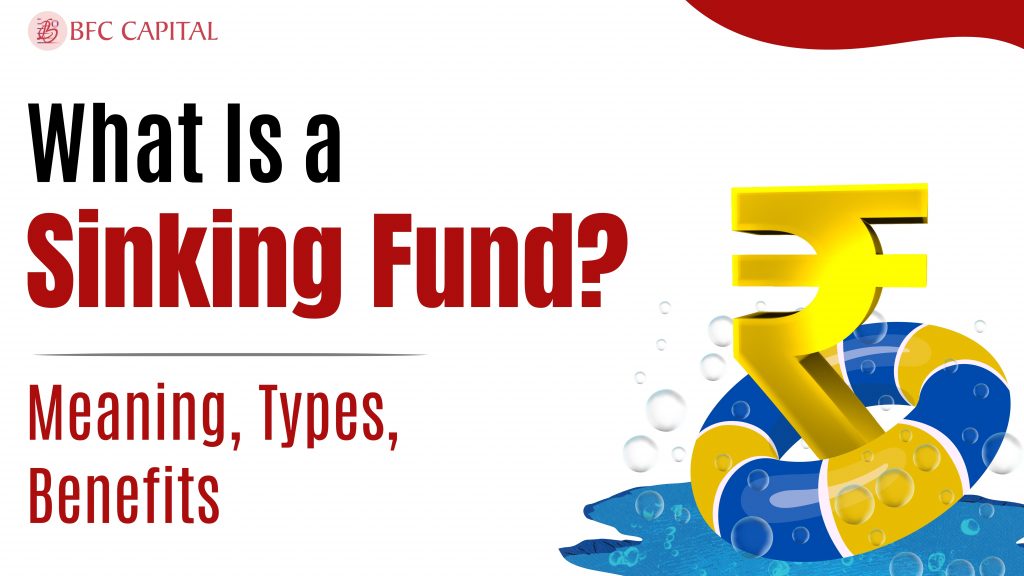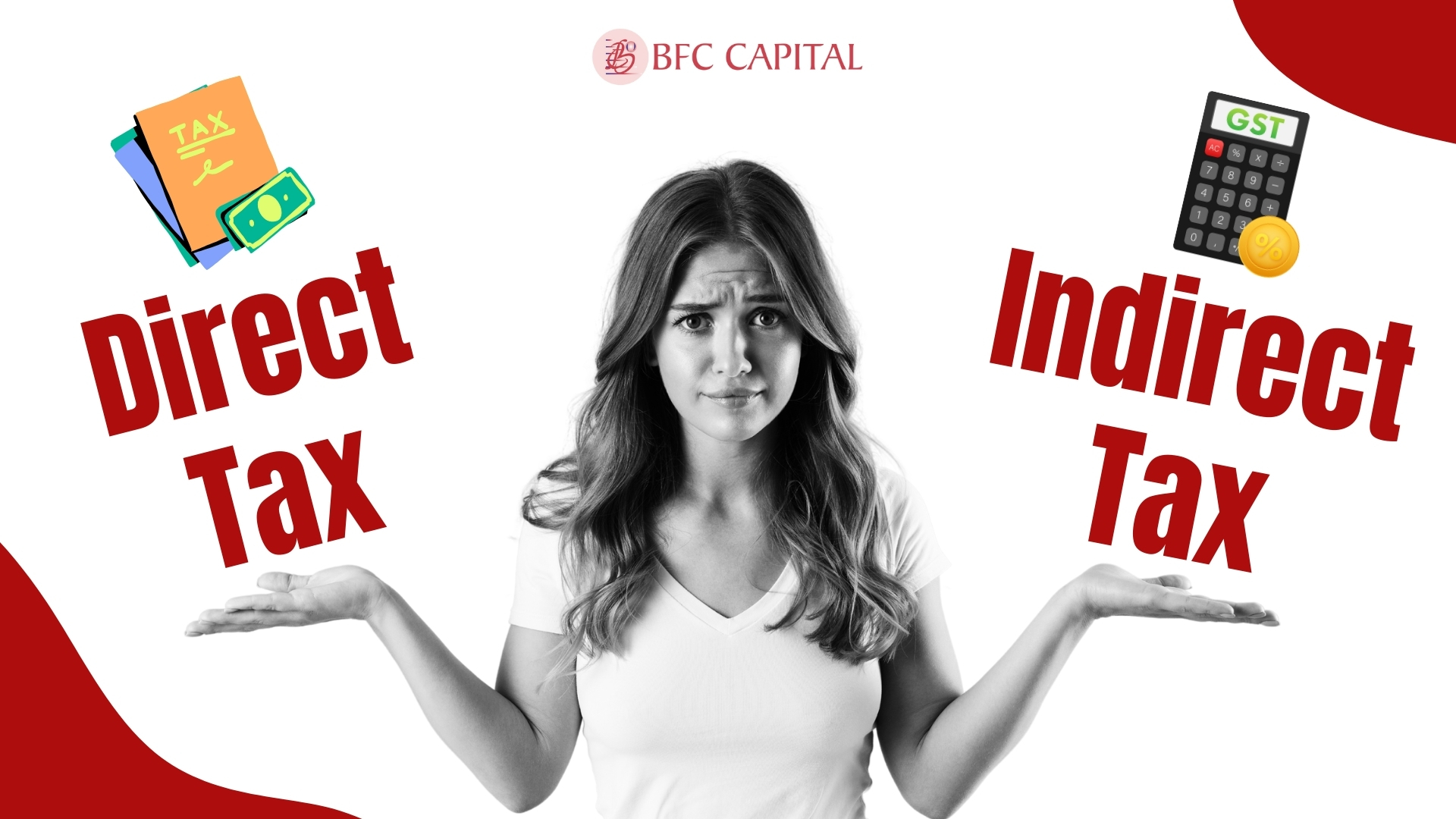
Are you dreading that annual car insurance bill or dreaming of a guilt-free vacation? A sinking fund can be your financial game-changer, empowering you to take control! Imagine a separate savings account you build up specifically for planned expenses. Just like setting aside a little cash each week to cover the cost of groceries, a sinking fund lets you tackle bigger, less frequent costs with ease.
In this blog, we’ll explain sinking funds, explore the different types you can create, and show you how they can turn future financial headaches into smooth sailing.
Sinking Fund Meaning: Explained!
For instance, if you have been planning to purchase a laptop for your sibling’s next birthday that will cost approximately 40,000 INR. You do not have the money presently,so you thought of saving a portion of cash on a monthly basis for it. A sinking fund is like a gradual and slow approach toward achieving this goal of saving up to 40,000 INR just like how one puts aside a small amount of money at any one time every month.
A sinking fund, in more general terms, refers to a pool of cash that is accrued over time with the intention to finance a big and distant expense. It is like having a separate account where money is to be saved for that purpose only. It is a fund that is created for use in either the redemption of liability or for a specific or large purchase or expense, unlike a savings account, which can be for any use. Companies also use sinking funds, for instance, to save for loan repayment or to replace costly equipment.
Types of Sinking Funds
The sinking funds can be majorly be categorized into the following types:
Debt Repayment Sinking Fund:
Purpose: This fund helps you pay off existing debt faster.
Benefits: By setting aside regular contributions, you can make larger lump sum payments towards your debt, potentially saving on interest charges and accelerating your debt-free journey.
Major Purchase Sinking Fund:
Purpose: This type of fund allows you to save towards a particular, large expense, such as a new vehicle, an ideal vacation, or a deposit on a home.
Benefits: Ensures that you do not spend cumulative savings or use your credit cards to make major purchases. It also let you enjoy purchased products without the suffering of guilt since know that the product was planned and budgeted for
College Education Sinking Fund:
Purpose: This fund assists in preparing for education needs that may be required in the future for either oneself, children or grandchildren.
Benefits: It is common for education costs to be high, which is why opening a sinking fund will help you save a lot over time, and is not a burden when education is around.
Tax Payment Sinking Fund:
Purpose: This fund acts as a reserve you create each year in order to cater for taxes that may occur at certain times of the year such as property tax or Self-employment tax.
Benefits: It accumulates money that could be spent when the time arises for a particular liability, which otherwise results in unplanned spending due to late tariffs and cash crunch.
With a little planning and consistent saving, sinking funds can help you achieve your financial milestones that can range from saving for college education to some major purchase.
How different Sinking Fund is from Emergency Fund?
Both emergency funds and sinking funds are important in any financial plan, but they address two different issues.
An emergency fund is like a helping hand in case of an unpredicted event. It is meant for use in situations where you are rendered jobless or experience any other misfortune that befalls people at times. This could be anything from the loss of a job or an illness within the family to an overheating car or a broken refrigerator, etc. It is well advised to keep between 3 to 6 months of your living expenses in a readily accessible account such as a high-yield savings or a checking account. However, the crucial thing about them is how easy it is to get your hands on this cash at the time that you need it the most. You can pay an amount towards this fund differently depending on your earnings and your status, but it is vital to contribute regularly towards the fund. Normally, you don’t use it, but having this money around is wise since it just ensures that in the event of any loss or any other challenge, you do not have to borrow.
A Sinking fund, on the other hand, is for known or expected expenses that arise in the future. It is like having money saved for the things that one desires or will require in the future. This could be anything ranging from dream vacation and holiday gifts to a down payment on a new car or even yearly items such as car insurance, property taxes, etc. The size of the sinking fund depends upon the particular need you want to finance in advance. Maybe you’re saving for a new Apple Phone that costs 80,000 rupees, so you set aside 8000 rupees each month for 10 months. This may involve the use of a savings account or simply a cash envelop system. You must save a fixed amount by a month or so to arrive at the target amount before the target date. Unlike the emergency fund, you will use this money as soon as you hit the goal and strictly for the intended purpose.
Creating a Sinking Fund: Step-by-Step
Ready to save for that dream vacation or a new phone? A sinking fund can help you get there! Here’s how to set one up in a few simple steps:
Pick Your Goal:
What is your individual goal or objective? A new car, a down payment on a house, or maybe that trip to Switzerland? Having a clear goal will keep you motivated to save for it.
Set a Deadline:
What is the deadline to achieve your goal? Setting a deadline will help you figure out how much to save each month so that you have your stipulated amount.
Figure Out Monthly Savings:
Take the total amount you need to save and divide it by the number of months until your deadline. This is how much you should aim to save each month. You need to make sure the resulting amount fits your monthly budget.
Open a Savings Account:
It is better to open a new bank account where you will deposit and hold your sinking fund so that it does not intermingle with your other expenses.
Make life easier! Schedule automatic transfers from your main account to your sinking fund each month. This ensures you save consistently and don’t forget to contribute.
Be Flexible:
Life happens! If your income changes or unexpected expenses pop up, be ready to adjust your monthly contributions or deadline as needed.
Remember, a sinking fund is all about planning and saving for your goals. By following these steps, you can watch your dream turn into reality!
Sinking Funds: Your Savings Superpower!
Sinking funds are like those little savings buckets which help to get you to your objective quicker and without worry.
Here’s how they benefit you:
Become a Saving Machine:
Sinking funds encourage you to save regularly, building a good habit of putting money aside. The more you practice, the better you get at saving overall!
Kiss Your Goals Goodbye (in a good way!):
Having a specific target for your money, like a vacation or a new phone, keeps you motivated. The sinking fund shows you exactly how much closer you get to your goal each month.
Debt? Buh-bye!
Need to pay off a debt? A sinking fund can help you do it much faster. By setting aside money specifically for debt repayment, you can chip away at it consistently.
Ditch the Credit Card:
Sinking funds help you avoid relying on credit cards for future expenses. Save up the money yourself and say goodbye to extra interest charges!
Peace Out, Financial Worries!
It relieves stress when you are assured that you have money saved for specific expenses or any other need in the near future. In other words, unexpected costs won’t throw your budget off track, and you can focus on what matters most.
Conclusion
In conclusion, sinking funds are like magic savings accounts, but without the spells! They help you turn future expenses into manageable bites. Imagine that dream vacation or new phone seems miles away. A sinking fund lets you break it down into smaller, regular contributions. By the time your goal arrives, you’ll have the money saved up without any stress or last-minute scrambles.
Sinking funds aren’t limited to vacations and gadgets. They can tackle anything from car down payments to yearly bills. The key is to set a clear goal, figure out how much you need to save each month and stick to your plan. It’s like a financial autopilot that gets you where you want to be.
So, ditch the financial stress and start building your sinking fund today!
You’ll be surprised at how quickly you can achieve your financial goals and build a brighter financial future, one smart save at a time!
Please share your thoughts on this post by leaving a reply in the comments section.
Also, check out our recent post on: “About Association of Mutual Funds in India (AMFI): Roles And Objectives“
To learn more about mutual funds, contact us via Phone, WhatsApp, Email, or visit our Website. Additionally, you can download the Prodigy Pro app to start investing today!
Disclaimer – This article is for educational purposes only and by no means intends to substitute expert guidance. Mutual fund investments are subject to market risks. Please read the scheme related document carefully before investing.

Assistant Vice President – Research & Analysis
Akash Gupta heads the Research & Analysis department at BFC CAPITAL, where he combines in-depth market insights with strategic analysis. He holds multiple certifications, including:
- NISM-Series-XIII: Common Derivatives Certification
- NISM-Series-VIII: Equity Derivatives Certification
- NISM-Series-XXI-A: Portfolio Management Services Certification
- IRDAI Certification
With his expertise in equity, derivatives, and portfolio management, Akash plays a key role in providing research-backed strategies and actionable insights to help clients navigate the investment landscape.







